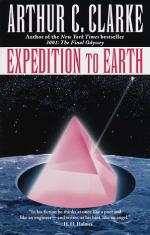|
This section contains 1,131 words (approx. 3 pages at 400 words per page) |

|
The Dawn of the Atomic Age
In August 1945, in an effort to end World War II quickly and decisively, the United States dropped atomic bombs, also known as A-bombs, on the Japanese cities of Hiroshima and Nagasaki. The immediate explosive and long-term destructive forces were unlike anything that humanity had ever seen. These two events, which led to the rapid surrender of Japan and the end of World War II, also served to usher in the atomic age and the threat of further atomic war. During World War II, many countries had been working on their own atomic bombs. After the decimation at Hiroshima and Nagasaki, several countries rushed to complete these bombs. In 1946, the United States, the world's top superpower, again set an example when it began a series of peacetime atomic bomb tests at Bikini Atoll in the western chain of the Marshall Islands, in the...
|
This section contains 1,131 words (approx. 3 pages at 400 words per page) |

|




